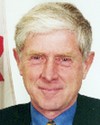Mr. Speaker, I am pleased to have the opportunity to speak on this motion today.
As members in the House have heard, the President of the Treasury Board has already commented on the benefit we are already taking of the advice and analysis of the Auditor General to improve the way we do things as a government. At the same time we welcome the scrutiny that the public accounts committee will bring to the report of the Auditor General and to other operations of government. We look forward to its advice on how we can make even further progress.
To this point in the debate we have talked about money. There is no doubt that the preoccupation of many of us in the House and of many Canadians is how we can move toward a balanced budget and how we can better control our spending and ensure value for those dollars that we do spend in terms of service to Canadians and the programs our country counts on.
I want to depart on a somewhat different track to simply say that while we deliver programs and services with money mandated by this Parliament, they are delivered by the people who work for the Government of Canada.
I am pleased to have this opportunity to set out today plans of the government to renew the Government of Canada. My colleague, the President of the Queen's Privy Council and minister responsible for federal-provincial relations, has set out a plan which he aptly calls "Getting Government Right".
Unlike the previous government which felt it could use the public service as the brunt of all its problems, without affecting the services Canadians have come to depend on, we are working closely with our employees to develop new and innovative ways of cutting costs. I intend to talk particularly about our plans to give them the tools to do their jobs in a more efficient and effective way.
Unlike the previous government we believe government can be a force for good in society. By working together with federal public servants and by establishing a harmonious working relationship with our employees we can produce the solid results the previous government found so elusive. We can reduce waste. We can eliminate obsolete functions. We can improve services to taxpayers and create a more productive government.
We have one of the most respected public services in the world. Federal public service employees are ready to rise to the challenge of the coming years.
Under the previous government, Canadians became increasingly alienated from their government. The sense of cynicism and distrust was reaching crisis proportions that were beginning to threaten the health of our democracy and our future prosperity. How can we manage our country's affairs or bring people together to face tough issues when Canadians have so little confidence in the country's decision makers and the decision making process?
The problems we face today, the heavy debt load left behind by the previous government, the dropout rate in our schools, the need to get Canadians back to work, the need to improve our competitiveness in the global economy, all are crying for
innovative approaches and fresh solutions. We have to change the way we have done business in the past.
Let me set out some of the recent innovations the federal public service has developed to provide affordable, accessible and responsive services and programs to Canadian citizens. It truly is an impressive list and members will be as impressed as I am with the quality of the public service we have working for us.
First we are harnessing the computing and networking power of new technologies to improve services to Canadians. There are enormous opportunities for the government to improve its services and program delivery through innovative use of information technologies and we are tapping them.
By its very nature, the government is focused on services and uses large quantities of data whether for the payment of family allowances, pensions and UI benefits or for the delivery of health and safety services. Income tax, scientific research and statistic programs, for example, need very complex information systems. At the same time, substantial improvements in government efficiency, in the quality of services and in the reduction of related administration cost can be achieved by using the new technologies to manage information and design systems.
Recent technological developments in information management systems have considerably reduced the cost of applications while increasing their effectiveness and efficiency. With the new technologies it is now possible to collect, store, manage and distribute data with a high degree of efficiency. The ability to obtain accurate data in a very short period of time provides us with tools to improve service and decision-making.
We are managing this unprecedented rate of change in a way that taps the creative and organizational skills of federal public service employees. They play a vital role in shaping the human face of government and in making government a force for good in the economy of the country. Public service employees are rising to the challenge.
To give an example of the kinds of changes taking place in the public service, one just has to look at the typical work station of a government employee. Today microcomputers are used by one out of every three government employees and networks linking them are expanding rapidly. Program operations and service delivery are becoming increasingly dependent on information technology.
The challenge now is to bring our present systems up to date and adapt them to the new applications which are emerging. We have developed a plan for doing so. It is a comprehensive, integrated approach to modernizing government services and program delivery mechanisms through the use of enabling technology.
In the next few weeks the Treasury Board secretariat will be sending out for consultation a draft blueprint for government service renewal. We are asking government employees and private sector suppliers to government to comment on the plan. That is a very important step in our transition from paper driven bureaucratic processes to modern, efficient, electronically linked business transactions. It is people who can turn ambitious plans into reality.
We are building partnerships with our employees. We are building partnerships between government departments, between the federal government and its clients and between the federal government and the Canadian public.
Employees want to know how they can fit into a new and more efficient way of delivering services. They want to know how they can contribute to this important goal. The plan sets out a vision for a new way of doing business and lets employees contribute where their skills are most needed.
A key principle in the plan is the recognition that the role of government must be dramatically reassessed to live within shrinking budgets.
Another is that we can improve the way services are delivered. To do this we are creating a learning culture in the public service that supports employees in their transition to new ways of doing business. We are committed to enhancing the knowledge, skills and active participation of employees. We believe in partnerships. The advent of computer based networking means that we are becoming increasingly interdependent and so it is only logical that partnerships between the various players must be the starting point of any initiative. The blueprint for government service renewal reflects this.
Program renewal projects are already under way in agencies such as Revenue Canada, Health Canada, and Human Resources Development Canada. These will serve as models. Revenue Canada , for instance, is introducing a single business registration number for corporations paying taxes, duties and GST. This number will make it possible to have a single window access to Revenue Canada and to file and submit a consolidated net payment. In a number of areas in a number of departments single window access has the potential to be a major improvement for people dealing with the federal government.
A government-wide telecommunications network infrastructure will mean that federal public service employees will be able
to contact colleagues anywhere in Canada by electronic mail. The infrastructure will set the stage for delivering public services electronically and it will trigger significant efficiency gains and reduce duplication of networking facilities.
The real payoff from these innovations comes through the synthesis of organizational innovation with technological innovation. Viewing information as a strategic resource that infuses every dimension of government operations and employing information technology in government to achieve the public sector equivalent of competitive advantage provides a framework for this synthesis.
Everyone in the House today will agree when I say that the remaining years of this century will be a period of significant challenge for Canada. A growing and increasingly diverse population, continuing global economic transition and rapidly changing public priorities will require that the government adapt existing programs and create new ones that are more productive, require fewer public resources and increase the timeliness and convenience of public services. Thoughtful strategic uses of information technology will mean the difference between well managed effective programs and programs that are a public encumbrance.
Let me give the House a look at what it will be like to do business with the government in a few years. What will work be like from the perspective of a federal government employee?
First, the information people need to do their jobs will be available at their fingertips. The public will have direct access to government information from its homes. Electronic libraries will be available from libraries and stores. The government will publish a catalogue of software that will be available free or for licensing to the private sector and the public. Service providers will be able to make rapid, on the spot decisions supported by information systems which provide immediate access to all required information and expertise.
Far fetched? Not at all.
Canadians will be able to access personalized services, 7 days a week and 24 hours a day, through terminals-similar to automatic teller machines-installed in convenient locations or through personal computers. Regular communication between government and the private sector as well as within government itself will soon be electronic. This will be reality very shortly. Consider, for example, how quickly Canadians got used to automatic tellers once they realized how convenient they were.
The computer will become just another household appliance, as commonplace as a refrigerator or a stove. It will be able to recognize voice messages, handwriting, be able to communicate with pictures. We will take it for granted. Employees will use computers even more widely in their work. They will routinely create spread sheets, retrieve information from data bases and produce charts and diagrams. Computer assisted translation will support and enhance employees' language abilities, thus improving service to the Canadian public. This is not science fiction.
The government's strategy for moving forward aims to take advantage of five key trends. Employee's attitudes to technology are rapidly changing. Their knowledge, proficiency and confidence are improving at a rapid rate. Employees no longer resist technology. They want more of it and want to be better trained to apply it. The public is getting used to electronic service and is asking to be served in this way. New entrants to the workforce who have grown up with technology expect to use it in their jobs.
It will be much easier to obtain information. Knowledge will be available via expert systems to answer queries as a specialist might. New applications will be less costly and more timely due to the use of packaged systems or modern system development products and it is getting easier all the time. The ability to manage text, graphics, data, sound, video and pictures in the same data base will change the way information is used. The ability to access multiple data bases easily will contribute to this change as well.
Why is it so important to move in this direction? It means improved delivery of service to the public, significantly improved productivity in the public service and increased international competitiveness in a global economy. Partnership with other levels of government, with business, with labour is how it will be achieved. The government's vision for information management is the orderly transition to a seamless technological environment in the home or in the workplace at the service of Canadians.
I add as well that the Auditor General in his report placed great emphasis on the importance of information for parliamentarians. In our decision making we rely increasingly on rapidly available and accurate, well analysed information. The technological revolution that we see in the way government services will be delivered will also be a technological revolution in the kind of information that will be available to us as parliamentarians to make decisions as we move into a new world.
In closing I would like to quote Peter Drucker: "Every few hundred years throughout western history a sharp transformation has occurred. In a matter of decades society altogether rearranges itself: its world view, its basic values, its social and political structures, its arts, its key institutions. Fifty years later a new world exists. And the people born into that world cannot
even imagine the world in which their grandparents lived and into which their own parents were born".
We are going to be ready for that new world because in the words of all my colleagues in our cabinet, we are getting government right.











